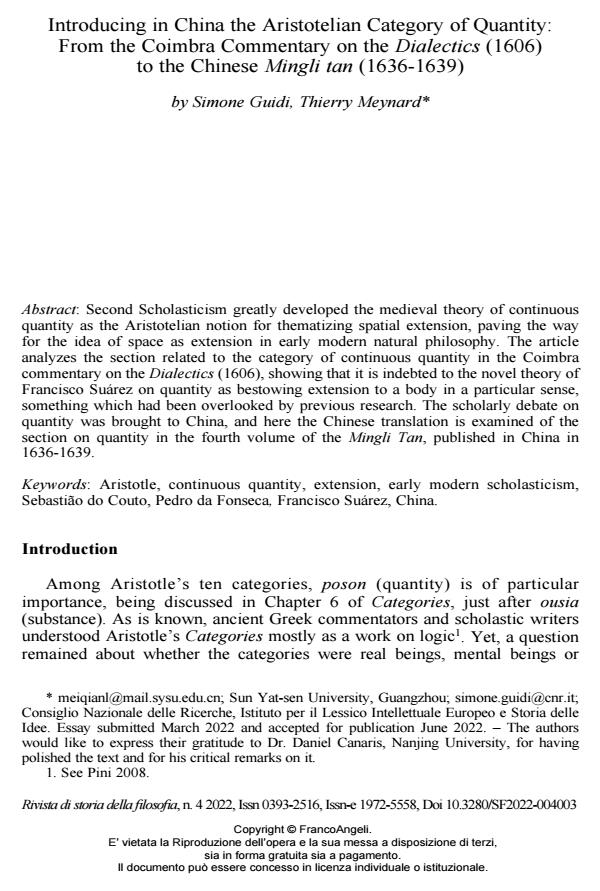Introducing in China the Aristotelian Category of Quantity: From the Coimbra Commentary on the Dialectics (1606) to the Chinese Mingli tan (1636-1639)
Titolo Rivista RIVISTA DI STORIA DELLA FILOSOFIA
Autori/Curatori Simone Guidi, Thierry Meynard
Anno di pubblicazione 2023 Fascicolo 2022/4
Lingua Inglese Numero pagine 21 P. 663-683 Dimensione file 898 KB
DOI 10.3280/SF2022-004003
Il DOI è il codice a barre della proprietà intellettuale: per saperne di più
clicca qui
Qui sotto puoi vedere in anteprima la prima pagina di questo articolo.
Se questo articolo ti interessa, lo puoi acquistare (e scaricare in formato pdf) seguendo le facili indicazioni per acquistare il download credit. Acquista Download Credits per scaricare questo Articolo in formato PDF

FrancoAngeli è membro della Publishers International Linking Association, Inc (PILA)associazione indipendente e non profit per facilitare (attraverso i servizi tecnologici implementati da CrossRef.org) l’accesso degli studiosi ai contenuti digitali nelle pubblicazioni professionali e scientifiche
Second Scholasticism greatly developed the medieval theory of continuous quantity as the Aristotelian notion for thematizing spatial extension, paving the way for the idea of space as extension in early modern natural philosophy. The article analyzes the section related to the category of continuous quantity in the Coimbra commentary on the Dialectics (1606), showing that it is indebted to the novel theory of Francisco Suárez on quantity as bestowing extension to a body in a particular sense, something which had been overlooked by previous research. The scholarly debate on quantity was brought to China, and here the Chinese translation is examined of the section on quantity in the fourth volume of the Mingli Tan, published in China in 1636-1639.
Parole chiave:Aristotle, continuous quantity, extension, early modern scholasticism, Sebastião do Couto, Pedro da Fonseca, Francisco Suárez, China.
Simone Guidi, Thierry Meynard, Introducing in China the Aristotelian Category of Quantity: From the Coimbra Commentary on the Dialectics (1606) to the Chinese Mingli tan (1636-1639) in "RIVISTA DI STORIA DELLA FILOSOFIA" 4/2022, pp 663-683, DOI: 10.3280/SF2022-004003